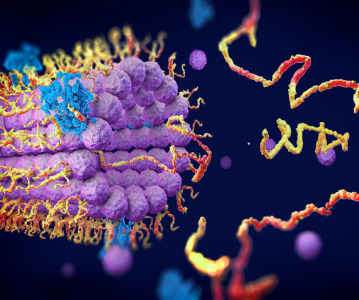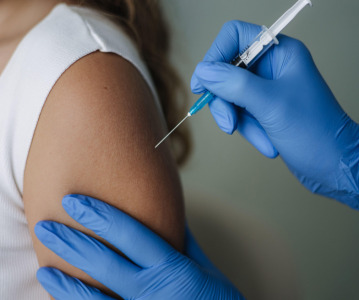PharmaCyte Biotech’s cannabinoid therapy may offer potential for childhood brain cancers

Reported research continues to demonstrate the anti-cancer properties of cannabinoids.
Research performed at the Ann and Robert H. Lurie Children's Hospital of Chicago and Northwestern University’s Feinberg School of Medicine and published in Child’s Nervous System provides further support for PharmaCyte Biotech’s efforts to develop a targeted cannabinoid-based chemotherapy for brain cancer utilizing its technology.
The article, titled “Spontaneous involution of pediatric low-grade gliomas: high expression of cannabinoid receptor 1 (CNR1) at the time of diagnosis may indicate involvement of the endocannabinoid system,” showed that activators of the endocannabinoid system offer potential therapeutic opportunities for children with pediatric low-grade gliomas (P-LGG). P-LGGs consist of a mixed group of brain tumours that represent the majority of central nervous system tumours in children. Some P-LGGs exhibit spontaneous shrinking after less than total surgical removal. For the first time, spontaneous shrinking of P-LGG has been suggested to be induced by endocannabinoids.
PharmaCyte’s CEO, Kenneth L. Waggoner, commented: “It is clear that PharmaCyte is on the right track to developing targeted therapies for deadly cancers. The research reported in the journal Child’s Nervous System, as well as other research, continues to demonstrate the anti-cancer properties of cannabinoids. We remain confident that Cell-in-a-Box offers a safe and versatile platform for targeted chemotherapy delivery to cancerous tumours in the brain.”
The researchers investigated molecular indicators of spontaneous shrinking in P-LGGs and found that tumors that remained stable or had spontaneous shrinking after surgery had significantly higher levels of expression of the CNR1 gene at the time of diagnosis. They hypothesize that high expression levels of CNR1 make P-LGGs more susceptible to the anticancer effects of normally occurring substances in the body known as endocannabinoids. By extension, plant-derived phytocannabinoid molecules, such as tetrahydrocannabinol (THC) and cannabidiol (CBD), may provide similar effects through their known interaction with endocannabinoid receptors like CNR1.
PharmaCyte’s cannabinoid program at the University of Northern Colorado involves developing a bioengineered cell line that will activate a cannabinoid-based prodrug into its cancer-killing form and then encapsulating these cells using the Cell-in-a-Box encapsulation technology. When the capsules are implanted near the tumor and the cannabinoid prodrug is administered to a patient, targeted chemotherapy results. Prodrugs of THC and CBD are candidates for this program, and brain cancer is PharmaCyte’s initial target using this cannabinoid therapy.
Mark L. Rabe, MD, a member of PharmaCyte’s Medical and Scientific Advisory Board, commented, “It is fascinating to think the body has built-in anti-cancer capabilities in the form of the endocannabinoid system. Cell-in-a-Box offers an ideal way to leverage the endocannabinoid system’s power by delivering THC and CBD to brain tumors like P-LGG in a targeted fashion, with the potential benefits of enhanced efficacy and fewer side effects.”
Related News
-
News A Day in the Life of a Start-Up Founder and CEO
At CPHI we work to support Start-Up companies in the pharmaceutical industry and recognise the expertise and innovative angles they bring to the field. Through our Start-Up Programme we have gotten to know some of these leaders, and in this Day in the ... -
News Biopharmaceutical manufacturing boost part of new UK government budget
In their national budget announced by the UK Labour Party, biopharmaceutical production and manufacturing are set to receive a significant boost in capital grants through the Life Sciences Innovative Manufacturing Fund (LSIMF). -
News CPHI Podcast Series: The power of proteins in antibody drug development
In the latest episode of the CPHI Podcast Series, Lucy Chard is joined by Thomas Cornell from Abzena to discuss protein engineering for drug design and development. -
News Amgen sues Samsung biologics unit over biosimilar for bone disease
Samsung Bioepis, the biologics unit of Samsung, has been issued a lawsuit brought forth by Amgen over proposed biosimilars of Amgen’s bone drugs Prolia and Xgeva. -
News CPHI Podcast Series: Why we need to consider women in clinical trials
The latest episode of the CPHI Podcast Series with Lucy Chard covers women's health, specifically women's representation in clinical trials, the associated bias, and the impacts on health for this population. -
News US FDA does not approve MDMA therapy for PTSD, requests more data
The MDMA-based therapeutic developed by Lykos Therapeutics, a California-based Public Benefit Corporation (PBC), has been reviewed and unapproved by the US FDA. The regulator has requested additional phase III trial data for further safety and efficacy... -
News Novartis and Viatris latest facing lawsuit over HeLa cell misuse
Global pharmaceutical companies Novartis and Viatris are the latest hit with a lawsuit claim pertaining to alleged misuse of the ‘HeLa’ cell line from the estate of woman whose cancerous tissue cells were taken without consent. -
News Sanofi invests billions into Frankfurt insulin production site
French pharmaceutical company Sanofi have announced an investment of EUR1.3 billion at their existing BioCampus site in Frankfurt am Main for the expansion of insulin production.
Position your company at the heart of the global Pharma industry with a CPHI Online membership
-
Your products and solutions visible to thousands of visitors within the largest Pharma marketplace
-
Generate high-quality, engaged leads for your business, all year round
-
Promote your business as the industry’s thought-leader by hosting your reports, brochures and videos within your profile
-
Your company’s profile boosted at all participating CPHI events
-
An easy-to-use platform with a detailed dashboard showing your leads and performance



.png)

.png)
.png)
.png)